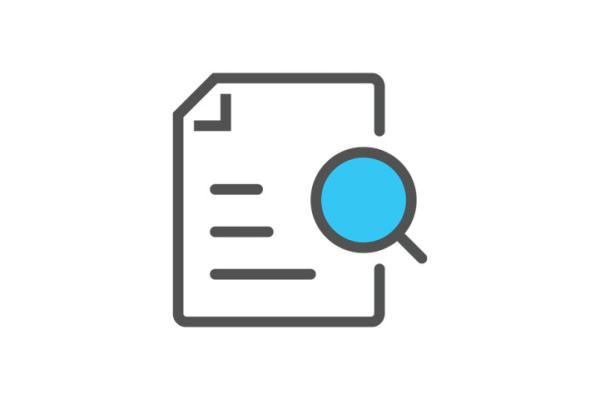Supporting documents
- FAQs on ERNs
- Documents relating to the application and the ERN assessment process:
- Description and procedures
- Toolbox (applications, checklist, etc.)
- Operational criteria for Networks
- Operational Criteria for Healthcare providers
- Application Form for Networks
- Application Form for Healthcare Providers
- Self-assessment for Networks
- Self-assessment for Healthcare providers
- Sample Letter of National Endorsement for Healthcare Providers
Info day
DG SANTE together with CHAFEA organised an info day in Brussels on the 7 April 2016 to explain the call for ERN to the interested stakeholders and to answer all questions on the 2016 call.
The first call for interest to establish a European Reference Network (ERN) and the call for grants for ERN are now closed.
Call 2016 outcome
- 24 applications received 370 hospitals and almost 1000 highly specialised units involved
- 26 Countries (25 EU Member States + Norway) involved
Approval of applicants: First wave of the 2016 Call
On 15 December 2016 the European Reference Network Board of Member States approved the following ERNs:
| 1. ERN BOND | European Reference Network on Rare Bone Disorders |
| 2. ERN CRANIO | European Reference Network on Rare craniofacial anomalies and ENT disorders |
| 3. Endo-ERN | European Reference Network on Rare Endocrine Conditions |
| 4. ERN EpiCARE | European Reference Network on Rare and Complex Epilepsies |
| 5. ERKNet | European Rare Kidney Diseases Reference Network |
| 6. ERN RND | European Reference Network on Rare Neurological Diseases |
| 7. ERNICA | European Reference Network on Rare inherited and congenital anomalies |
| 8. ERN LUNG | European Reference Network on Rare Respiratory Diseases |
| 9. ERN Skin | European Reference Network on Rare and Undiagnosed Skin Disorders |
| 10. ERN EURACAN | European Reference Network on Rare Adult Cancers (solid tumours) |
| 11. ERN EuroBloodNet | European Reference Network on Rare Haematological Diseases |
| 12. ERN EURO-NMD | European Reference Network for Rare Neuromuscular Diseases |
| 13. ERN EYE | European Reference Network on Rare Eye Diseases |
| 14. ERN GENTURIS | European Reference Network on Genetic Tumour Risk Syndromes |
| 15. ERN GUARD-HEART | European Reference Network on Uncommon And Rare Diseases of the HEART |
| 16. ERN ITHACA | European Reference Network on Rare Congenital Malformations and Rare Intellectual Disability |
| 17. MetabERN | European Reference Network for Rare Hereditary Metabolic Disorders |
| 18. ERN PaedCan | European Reference Network for Paediatric Cancer (haemato-oncology) |
| 19. ERN RARE-LIVER | European Reference Network on Rare Hepatological Diseases |
| 20. ERN ReCONNET | Rare Connective Tissue and Musculoskeletal Diseases Network |
| 21. ERN RITA | Rare Immunodeficiency, Autoinflammatory and Autoimmune Diseases Network |
| 22. ERN TRANSPLANT-CHILD | European Reference Network on Transplantation in Children |
| 23. VASCERN | European Reference Network on Rare Multisystemic Vascular Diseases |
Approval of applicants: Second wave of the 2016 Call
On 16 February 2017 the European Reference Network Board of Member States approved a 24th ERN:
| 24. ERN eUROGEN | European Reference Network on Rare and Complex Urogenital Diseases and Conditions |
Call 2016 assessment process
Any group of at least 10 healthcare providers established in at least 8 Member States which fulfill the legal provision established in the ERN legislation , were invited to submit an application for establishing an ERN in a given field of expertise by the deadline of 22 July 2016.
Only ERN proposals positively assessed according to the legislation and the Assessment Manual for ERNs, and approved by the ERN Board of Member States are eligible for a grant.
The European Commission has already completed the first eligibility check of the applications.
The Independent Assessment Body (IAB) contracted to carry out the technical assessment of the proposals received has already started working.
The final decision on the approval of the ERN proposal will be taken by the ERN Board of Member States (BoMS).
The first 24 ERNs were launched in 2017, involving more than 900 highly-specialised healthcare units from over 300 hospitals in 26 Member States.
Search tool
The ERN search tool presents information about the ERNs in a searchable way. The data concerned includes ERN names and details and ERN clinical centres names and details. You can look for the information from different points of views:
- Who is member of a given ERN: select the ERN you are interested in, and the list of its members will appear, both as a list and as geo-referenced pins on the map;
- Which clinical centres participate in the ERNs in a given country: select a country, or write directly its name, and the map will appear with the localization of the clinical centres which are members of ERNs;
There is a restricted area available for authorised users which is currently managed by the European Commission.





